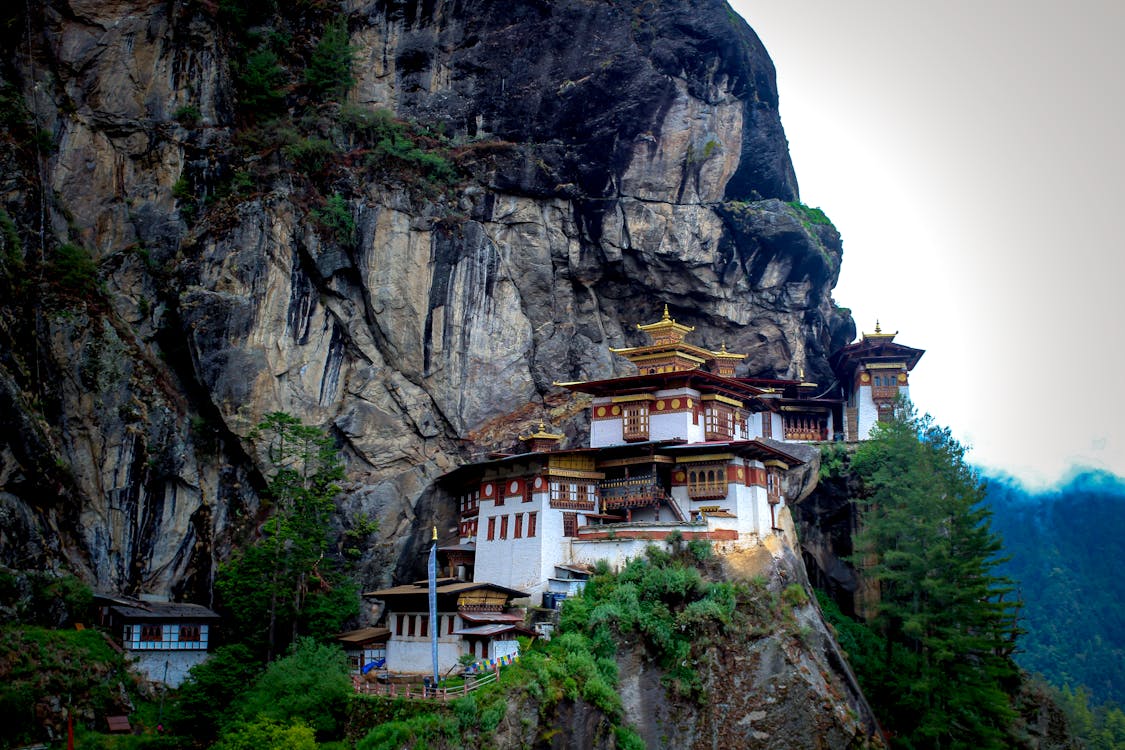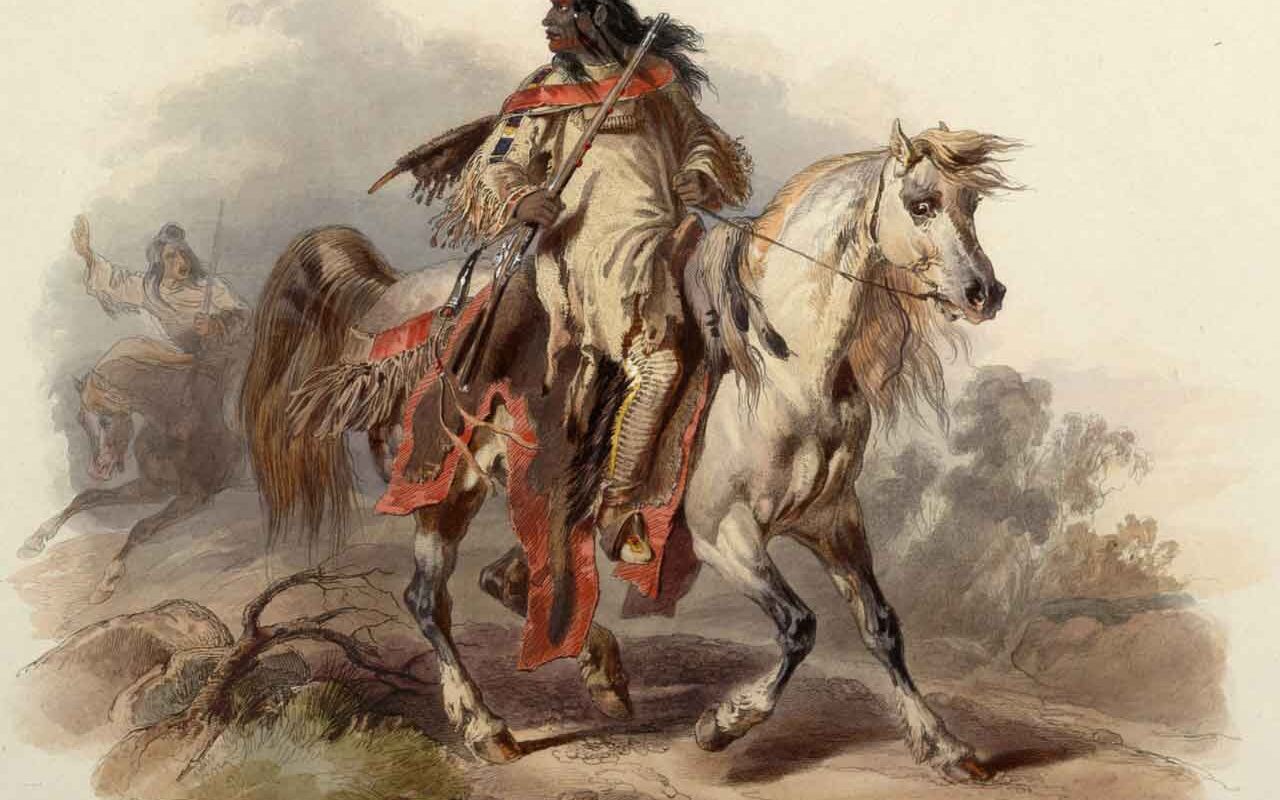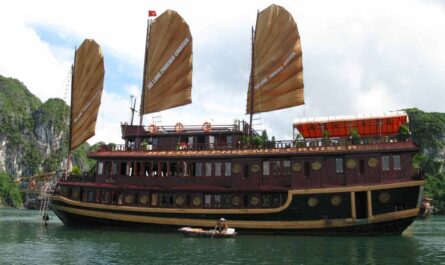What are some of the interesting facts about Bhutan? This landlocked kingdom, bordered by India to the south, east, and west, and by Tibet to the north, captivates with its breathtaking landscapes, deeply rooted traditions, and unwavering commitment to Gross National Happiness. Bhutan, often referred to as the “Land of the Thunder Dragon,” offers a harmonious blend of tradition and modernity. Its traditional dzongs (fortresses), adorned with intricate woodwork and vibrant paintings, stand as guardians of the nation’s rich history, while its bustling markets and emerging industries signify its embrace of progress. In this article, I will talk about some interesting facts about Bhutan.
Interesting Facts About Bhutan: History, Culture, Travel
Nestled in the heart of the Eastern Himalayas, Bhutan stands as a testament to the preservation of its unique culture and pristine natural beauty. Despite its small size, Bhutan boasts an extraordinary array of biodiversity, with lush forests teeming with diverse flora and fauna. From the soaring peaks of the Himalayas to the serene valleys dotted with prayer flags, Bhutan invites visitors to embark on a journey of discovery and enlightenment in a realm where happiness is not just a pursuit but a way of life. Here are some interesting facts about Bhutan:
1. The Happiness Index
In Bhutan, the pursuit of prosperity transcends mere economic indicators, as the nation embraces a holistic approach to measuring progress through the lens of Gross National Happiness (GNH). Unlike conventional measures such as Gross Domestic Product (GDP), which prioritize economic output, Bhutan’s GNH prioritizes the well-being and happiness of its citizens. Rooted in Buddhist principles and cultural values, GNH encompasses not only material wealth but also spiritual, social, and environmental dimensions. By emphasizing sustainable development and equitable distribution of resources, Bhutan strives to foster a society where happiness flourishes, ensuring the long-term prosperity and fulfillment of its people.
2. The Last Shangri-La
Nestled amidst the cradle of the Himalayas, Bhutan exudes an aura of timeless enchantment, earning it the illustrious title of “The Last Shangri-La.” Shielded from the onslaught of modernization by its rugged terrain and deliberate isolationist policies, Bhutan remains a bastion of traditional culture and unspoiled natural beauty. Here, ancient traditions intertwine with breathtaking landscapes, creating a sanctuary for those in search of serenity and authenticity. As the world hurtles towards an uncertain future, Bhutan stands as a beacon of hope, preserving its cultural heritage with unwavering dedication, and offering a glimpse into a bygone era of simplicity and tranquility.
3. The Himalayas Beckon
Bhutan, cradled in the embrace of the eastern Himalayas, beckons adventurers and nature enthusiasts alike with its awe-inspiring landscapes and diverse ecosystems. As a landlocked country bordered by India and China, Bhutan’s geographical isolation has endowed it with a unique blend of natural wonders, from snow-capped peaks to verdant valleys teeming with life. Trekking through pristine forests, traversing rugged mountain passes, or encountering exotic wildlife, every step taken in Bhutan is a testament to the indomitable spirit of exploration. With each vista unfolding before the eyes, the majesty of the Himalayas serves as a poignant reminder of nature’s enduring beauty and the boundless wonders that await those who dare to venture forth.
4. Mahayana Buddhism
Mahayana Buddhism stands as the spiritual cornerstone of Bhutan, permeating every aspect of its society with its profound teachings of compassion and enlightenment. As the dominant religion, Mahayana Buddhism not only informs the beliefs and practices of the Bhutanese people but also serves as a guiding force in shaping the nation’s culture, art, and festivals. From the intricately adorned monasteries that dot the landscape to the rhythmic chants that echo through the valleys, the presence of Buddhism is palpable, offering solace and spiritual nourishment to all who seek it.
5. Prayer Flags Flutter
Amidst the tranquil backdrop of Bhutan’s awe-inspiring landscapes, a vibrant tapestry of colors dances in the breeze, heralding the presence of prayer flags. These ubiquitous symbols of devotion adorn mountain passes, temple grounds, and village squares, their fluttering presence carrying prayers and blessings on the wind. Each flag, inscribed with sacred mantras and symbols, serves as a conduit for the aspirations of the faithful, their silent whispers echoing across the countryside. As they sway in harmony with the elements, prayer flags embody the timeless spirit of reverence and interconnectedness that defines Bhutanese culture.
6. The Kingdom of Bhutan
Nestled within the protective embrace of the Himalayas, Bhutan stands as a beacon of stability and tradition in an ever-changing world. Governed by a constitutional monarchy, the kingdom’s governance is guided by the vision of its king, who serves as the revered head of state. Upholding principles of democracy and cultural preservation, Bhutan’s monarchy plays a pivotal role in fostering unity and progress, ensuring the well-being and happiness of its citizens. Rooted in centuries of tradition yet poised for the challenges of the future, the Kingdom of Bhutan stands as a testament to the enduring spirit of resilience and harmony.
7. Preserving Languages
Bhutan, nestled in the Himalayas, is a mosaic of linguistic diversity, where several languages coalesce to form the intricate tapestry of its cultural identity. While Dzongkha stands as the official language, spoken by the majority, numerous minority languages add hues of diversity to Bhutan’s linguistic landscape. Recognizing the inherent value of linguistic heritage, concerted efforts are underway to preserve and promote these minority languages, ensuring that they remain vibrant threads in the intricate fabric of Bhutanese culture.
Through initiatives aimed at language revitalization and preservation, Bhutan seeks to safeguard its linguistic diversity for future generations, acknowledging the invaluable role each language plays in shaping the nation’s collective identity.
8. A Young Democracy
Bhutan’s journey to democracy is a testament to its commitment to progress and governance by the people, for the people. In 2008, the kingdom embarked on a historic transition, ushering in a new era as it transitioned from an absolute monarchy to a constitutional monarchy. With the inaugural democratic elections held in the same year, Bhutan took its first steps towards establishing a representative government, empowering its citizens to participate actively in shaping the nation’s destiny. Embracing democratic principles while upholding its cultural heritage, Bhutan continues to navigate the complexities of governance, guided by the vision of fostering unity, prosperity, and happiness for all its people.
9. A Hidden Gem Awaits
Nestled amidst the towering peaks of the Himalayas, Bhutan beckons to intrepid travelers in search of a truly transformative experience. Far from the beaten path of mainstream tourism, this hidden gem offers a sanctuary for those seeking solace in the embrace of unspoiled nature and timeless traditions. From the breathtaking vistas of snow-capped mountains to the serene tranquility of ancient monasteries, Bhutan captivates the senses at every turn, offering a glimpse into a world untouched by the frenetic pace of modern life.
But beyond its natural beauty lies the heart of Bhutan – a culture steeped in tradition, where happiness is not just a pursuit but a way of life. For those willing to embark on this journey off the beaten path, Bhutan promises an unforgettable adventure, where every moment is imbued with the magic of discovery and the promise of transformation.
10. The Importance of Music and Dance
Music and dance hold profound significance within the vibrant tapestry of Bhutanese culture, intertwining themselves intricately into the very fabric of the nation’s identity. They are not merely forms of entertainment but serve as conduits for the expression of Bhutan’s rich history, traditions, and spiritual beliefs. Whether it’s the rhythmic beats of drums echoing across valleys or the graceful movements of dancers adorned in colorful traditional attire, the essence of Bhutanese music and dance resonates deeply with its people.
In Bhutan, music and dance take center stage during festivals and cultural events, where communities come together to celebrate their heritage. Each note played and every step taken carries with it a profound sense of collective identity, connecting individuals across generations. Through music and dance, stories of heroism, love, and spirituality are passed down from one generation to the next, ensuring the preservation of Bhutan’s cultural legacy.
11. The Importance of Courtesy
In the intricate social tapestry of Bhutanese society, the threads of courtesy and respect weave together to form the very foundation upon which relationships are built. Upholding values deeply rooted in Buddhist teachings, Bhutanese people hold a profound reverence for elders and authority figures. Courtesy is not merely a superficial gesture but a reflection of genuine respect and humility towards others.
In every interaction, whether formal or informal, the exchange of pleasantries is accompanied by heartfelt warmth and sincerity. Politeness is not just a social nicety but a deeply ingrained cultural norm, shaping everyday interactions and societal norms. From the humblest peasant to the highest-ranking official, all are bound by the common thread of courtesy, fostering a sense of unity and harmony within Bhutanese communities.
12. Connection to Nature
Embedded within the very soul of Bhutanese culture is a profound reverence for the natural world that surrounds it. From the towering peaks of the Himalayas to the lush valleys teeming with life, nature is not merely a backdrop but an integral part of daily life. Bhutanese culture teaches a deep respect for the environment, viewing it not as a resource to be exploited but as a sacred trust to be safeguarded for future generations.
This connection to nature permeates every aspect of Bhutanese life, from traditional beliefs and practices to modern policies and initiatives. The concept of “Gross National Happiness,” a guiding principle of Bhutanese governance, places equal importance on spiritual, environmental, and cultural well-being alongside material wealth. Through sustainable practices and conservation efforts, Bhutan strives to maintain this harmonious relationship with nature, ensuring its continued prosperity for generations to come.
13. Thromde: Bustling Towns
Bhutan’s urban centers, known as thromdes, exude a unique charm characterized by a harmonious blend of tradition and modernity. Amidst the bustling streets adorned with traditional Bhutanese architecture, visitors encounter the majestic dzongs, fortress monasteries that serve as both administrative centers and spiritual sanctuaries. Lively markets brim with activity, offering a sensory feast of sights, sounds, and smells as locals and visitors alike peruse stalls filled with vibrant textiles, handicrafts, and fresh produce. Thromdes pulsate with life, serving as hubs of commerce, culture, and community, where the past seamlessly intertwines with the present, creating a vibrant tapestry of urban living.
14. Festivals Abound
In the vibrant tapestry of Bhutanese culture, festivals hold a place of paramount importance, serving as vibrant celebrations of religious devotion, cultural heritage, and communal spirit. Throughout the year, across the length and breadth of the kingdom, colorful festivals abound, each offering a spectacle of masked dances, traditional music, and elaborate costumes. From the sacred rituals of the tshechus to the joyous revelry of the wangchas, festivals in Bhutan are a testament to the enduring vitality of the nation’s cultural traditions. As drums reverberate and cymbals clash, communities come together in joyful camaraderie, reaffirming their bonds of kinship and shared identity.
15. The Tsechu Festival
Among Bhutan’s myriad festivals, the Tsechu festival stands out as a dazzling extravaganza of religious devotion and cultural splendor. Held annually in honor of Guru Rinpoche, the festival’s origins can be traced back to the 8th century when the revered saint is said to have performed miraculous feats to subdue local deities. Today, the Tsechu festival captivates audiences with its mesmerizing masked dances, known as cham, which depict mythological tales and spiritual teachings.
Adorned in elaborate costumes and intricately crafted masks, dancers whirl and leap to the hypnotic rhythm of traditional music, transporting spectators to a realm where the divine and the mundane intertwine. As pilgrims and revelers gather to pay homage to Guru Rinpoche, the Tsechu festival serves as a vibrant expression of Bhutan’s profound spiritual heritage and cultural legacy.
16. Tigers Roam the Wild
In the untamed wilderness of Bhutan, a majestic symbol of strength and grace prowls amidst the dense forests – the endangered Royal Bengal Tiger. As one of the last remaining habitats for these magnificent creatures, Bhutan serves as a vital sanctuary for their survival. Conservation efforts, guided by the kingdom’s commitment to environmental stewardship, play a pivotal role in safeguarding the future of these iconic predators. Through initiatives aimed at habitat protection, anti-poaching measures, and community engagement, Bhutan strives to ensure that tigers continue to roam the wild, their presence a testament to the kingdom’s dedication to biodiversity conservation.

17. High Altitude Kingdom
Perched atop the roof of the world, Bhutan is a kingdom of lofty heights and breathtaking vistas. From the verdant valleys carpeted in emerald green to the towering peaks that pierce the sky, the kingdom’s topography is as diverse as it is dramatic. With its lowest point nestled at a modest 200 meters above sea level and its highest peak, the awe-inspiring Jhomolhari, soaring to an altitude exceeding 7,300 meters, Bhutan encompasses a staggering range of elevations. This high-altitude kingdom is not only a playground for adventurers but also a crucible of resilience, where life flourishes in the most improbable of places, defying the harsh embrace of the Himalayas.
18. Limited Tourism
In a world overrun by mass tourism, Bhutan stands as a beacon of sustainable travel practices, embracing a policy of high-value, low-impact tourism. With its pristine landscapes, rich cultural heritage, and fragile ecosystems, Bhutan recognizes the importance of balancing economic development with environmental preservation. Through regulated tourism quotas, stringent entry requirements, and a focus on guided tours, the kingdom strives to minimize the negative impacts of tourism on its culture and environment. By prioritizing quality over quantity, Bhutan ensures that visitors experience the kingdom’s wonders in a manner that respects and preserves its unique identity for generations to come.
19. Gross National Happiness Commission
At the helm of Bhutan’s development journey stands the Gross National Happiness Commission, a visionary institution tasked with charting a course towards holistic prosperity. Unlike conventional measures of progress, the Commission’s mandate extends beyond economic growth to encompass the broader dimensions of social, cultural, and environmental well-being.
Through meticulous planning and policy formulation, the Commission seeks to nurture a society where happiness is not merely a pursuit but a tangible reality for all Bhutanese citizens. By prioritizing the harmonious integration of material wealth with spiritual and communal fulfillment, it paves the way for a future where the prosperity of the nation is measured not in monetary terms alone but in the collective joy and well-being of its people.
20. Bhutanese Clothing: Gho for Men and Kira for Women
In the vibrant tapestry of Bhutanese culture, traditional clothing serves as a tangible expression of identity and heritage. For men, the Gho, a knee-length robe secured at the waist with a belt, embodies timeless elegance and masculine grace. Meanwhile, women adorn themselves in the Kira, a floor-length wrap-around garment adorned with intricate patterns and vibrant hues, reflecting the beauty and grace of Bhutanese femininity.
Beyond mere garments, the Gho and Kira are symbols of tradition and continuity, linking past generations with the present and infusing everyday life with a sense of cultural pride and belonging. Whether worn during festive celebrations or daily routines, Bhutanese clothing serves as a visual testament to the kingdom’s rich cultural heritage and enduring traditions.
21. Dzongs: Architectural Marvels
Standing sentinel amidst Bhutan’s rugged landscapes, dzongs command attention with their imposing presence and timeless grandeur. These fortress monasteries, with their intricate woodwork, towering whitewashed walls, and ornate golden roofs, are not merely architectural marvels but living embodiments of Bhutanese history and spirituality. Serving dual roles as religious sanctuaries and administrative hubs, dzongs are the beating heart of Bhutanese communities, where spiritual devotion converges with earthly governance.
From the sacred halls where monks chant ancient sutras to the bustling courtyards where civil servants carry out their duties, dzongs are vibrant centers of activity, where the past and present intersect in a seamless fusion of tradition and modernity. As guardians of Bhutan’s cultural legacy, these majestic structures stand as testaments to the kingdom’s enduring spirit and unwavering commitment to preserving its heritage for future generations.
22. The Tiger’s Nest Monastery
High above the clouds, nestled within the rugged cliffs of Paro Valley, lies the awe-inspiring Taktsang Monastery, better known as the Tiger’s Nest. Perched precariously on a sheer cliffside, this iconic landmark is not only a testament to Bhutan’s rich religious heritage but also a symbol of spiritual resilience and devotion. Legend has it that Guru Rinpoche, the revered saint who brought Buddhism to Bhutan, meditated in a cave at this very site, riding upon the back of a tigress.
Today, Taktsang Monastery serves as a sacred pilgrimage site, drawing devotees and adventurers alike to marvel at its breathtaking beauty and immerse themselves in the tranquility of its hallowed halls. As prayer flags flutter in the mountain breeze and the distant rumble of waterfalls fills the air, visitors embark on a journey of self-discovery and enlightenment, ascending the winding trails to reach the lofty heights of spiritual awakening.
23. Bhutanese Cuisine
A culinary journey through Bhutan is a feast for the senses, where hearty flavors and vibrant spices combine to create a symphony of taste and texture. At the heart of Bhutanese cuisine lies a reverence for local ingredients and traditional cooking methods, resulting in dishes that are as nourishing as they are delicious. Staples such as red rice, with its nutty flavor and chewy texture, form the cornerstone of Bhutanese meals, providing sustenance and satisfaction to diners across the kingdom.
But it is the ubiquitous presence of chilies and cheese that truly sets Bhutanese cuisine apart, infusing every dish with a fiery kick and creamy richness that tantalizes the palate. Accompanied by a steaming cup of butter tea, a warm and comforting brew made from yak butter and tea leaves, Bhutanese cuisine offers a culinary experience that is as unforgettable as it is unique.
24. Ema Datshi: A National Favorite
Among the myriad delights of Bhutanese cuisine, one dish stands out as a beloved national favorite – Ema Datshi. A spicy concoction of fresh green chilies simmered in a rich sauce of melted local cheese, Ema Datshi epitomizes the bold flavors and robust simplicity of Bhutanese cooking. Whether enjoyed as a hearty main course or served alongside steaming bowls of red rice, this iconic dish delights the taste buds with its fiery heat and creamy indulgence.
As diners gather around communal tables to savor each mouthful, laughter and conversation flow freely, binding friends and family together in a shared appreciation for Bhutan’s culinary heritage. With every spicy bite, Ema Datshi invites diners to experience the warmth and hospitality of Bhutanese culture, leaving an indelible impression that lingers long after the meal is finished.
25. Respectful Greetings
In the graceful dance of social interactions, Bhutanese culture places great emphasis on the art of respectful greetings, where simple gestures speak volumes of sincerity and reverence. As individuals cross paths on bustling streets or enter each other’s homes, a slight bow accompanied by folded hands is a customary greeting, symbolizing humility and goodwill. This gesture of respect transcends mere formality, serving as a tangible expression of the deep-rooted values of courtesy and humility that permeate Bhutanese society. With each respectful greeting exchanged, bonds are strengthened, and connections forged, weaving a tapestry of mutual respect and harmony that binds communities together.
26. Archery: The National Sport
Amidst the breathtaking landscapes of Bhutan, the crisp twang of bowstrings and the distant thud of arrows hitting their mark reverberate through the air, signaling the nation’s enduring love affair with its national sport – archery. Dating back centuries, archery holds a special place in Bhutanese culture, serving not only as a recreational pastime but also as a vibrant expression of communal spirit and competitive fervor. From village fields to national arenas, archery competitions draw enthusiastic crowds, who cheer on competitors with infectious energy and pride. As arrows soar through the sky, propelled by skill and determination, archery becomes more than just a sport – it becomes a celebration of Bhutan’s rich cultural heritage and the indomitable spirit of its people.
27. Hydropower: A Clean Energy Source
In the heart of the Himalayas, Bhutan harnesses the power of its abundant water resources to illuminate the path towards a sustainable future. With its rugged terrain and gushing rivers, the kingdom is endowed with immense hydroelectric potential, which it harnesses to generate clean and renewable energy. Through a network of hydropower plants, Bhutan has emerged as a net exporter of electricity, sharing its surplus energy with neighboring countries while reducing its own reliance on fossil fuels.
As turbines spin and rivers flow, the hum of hydropower echoes the kingdom’s commitment to environmental stewardship, providing a beacon of hope in the global quest for clean energy solutions. With each megawatt generated, Bhutan takes a step closer towards a brighter, greener future for generations to come.
28. Limited Internet Access
In the digital age, where connectivity is ubiquitous, Bhutan stands as a bastion of simplicity, with limited internet access deliberately maintained to preserve its unique cultural identity and traditional way of life. While the rest of the world races towards digitalization, Bhutan treads cautiously, mindful of the potential pitfalls of unrestricted access to the online realm. By carefully regulating internet usage, the kingdom seeks to shield its citizens from the onslaught of external influences that threaten to erode the fabric of its society. Instead, Bhutan embraces a slower pace of life, where face-to-face interactions and communal bonds take precedence over virtual connections, fostering a sense of unity and harmony that transcends the digital divide.
29. Focus on Sustainability
Embedded within the very ethos of Bhutanese governance is a steadfast commitment to sustainability, recognizing the intrinsic value of preserving its natural environment for future generations. Through a series of progressive policies and initiatives, the kingdom strives to strike a delicate balance between economic development and environmental conservation. From stringent regulations on deforestation and carbon emissions to investments in renewable energy and ecotourism, Bhutan leads by example in the global fight against climate change. As the world grapples with the urgent need for sustainability, Bhutan stands as a shining beacon of hope, demonstrating that progress need not come at the expense of the planet’s health and well-being.
30. The Royal Bhutan Flower
In the pristine high-altitude landscapes of Bhutan, a delicate treasure blooms amidst the rugged terrain – the exquisite Blue Poppy, revered as the kingdom’s national flower. With its delicate petals and vibrant hue, the Blue Poppy symbolizes the resilience and beauty of Bhutan’s natural heritage. Despite its elusive nature, this rare flower captivates the imagination of all who encounter it, its fleeting presence serving as a poignant reminder of the fragility of life and the importance of preservation. As Bhutan continues to tread lightly upon the earth, the Blue Poppy stands as a silent sentinel, bearing witness to the kingdom’s unwavering dedication to environmental stewardship and the enduring legacy of its majestic landscapes.
31. The Importance of Education
In Bhutan, the pursuit of knowledge is not merely a means to an end but a fundamental human right and a cornerstone of national development. Recognizing the transformative power of education, the kingdom prioritizes the provision of quality learning opportunities for all its citizens, regardless of background or circumstance. Through a robust educational infrastructure and progressive policies, Bhutan aims to cultivate a skilled and well-informed population equipped to navigate the complexities of the modern world.
From early childhood education to tertiary institutions, the kingdom invests in nurturing curious minds and fostering critical thinking skills, laying the foundation for a future where every individual can reach their full potential and contribute meaningfully to society.
32. Endangered Black-Necked Cranes
In the tranquil wetlands and rice fields of Bhutan, a majestic spectacle unfolds each winter as the endangered Black-Necked Crane arrives to seek refuge in the kingdom’s pristine landscapes. Recognized as a symbol of peace and longevity, these graceful migratory birds find sanctuary in Bhutan, where they are welcomed with open arms by local communities. Business – Money Making – Marketing – E-commerce
Through dedicated conservation efforts and habitat preservation initiatives, Bhutan strives to ensure the continued survival of the Black-Necked Crane, safeguarding not only a species but also a cultural heritage deeply intertwined with the rhythms of nature. As the cranes dance gracefully amidst the mist-shrouded valleys, they serve as ambassadors of hope, reminding us of the importance of preserving biodiversity and living in harmony with the natural world.
33. Limited Television
In a world dominated by the relentless onslaught of mass media, Bhutan stands apart with its deliberate approach to modernization, reflected in the limited introduction of television in 1999. By carefully controlling access to television programming, the kingdom seeks to mitigate the potential negative impacts of media consumption on its unique cultural identity and traditional way of life.
Instead of succumbing to the allure of constant connectivity, Bhutan encourages its citizens to engage in meaningful interactions and embrace the richness of their cultural heritage. With television serving as a window to the outside world rather than a dominant influence, Bhutan preserves the sanctity of its communities, ensuring that progress unfolds hand in hand with the preservation of its cherished traditions and values.



